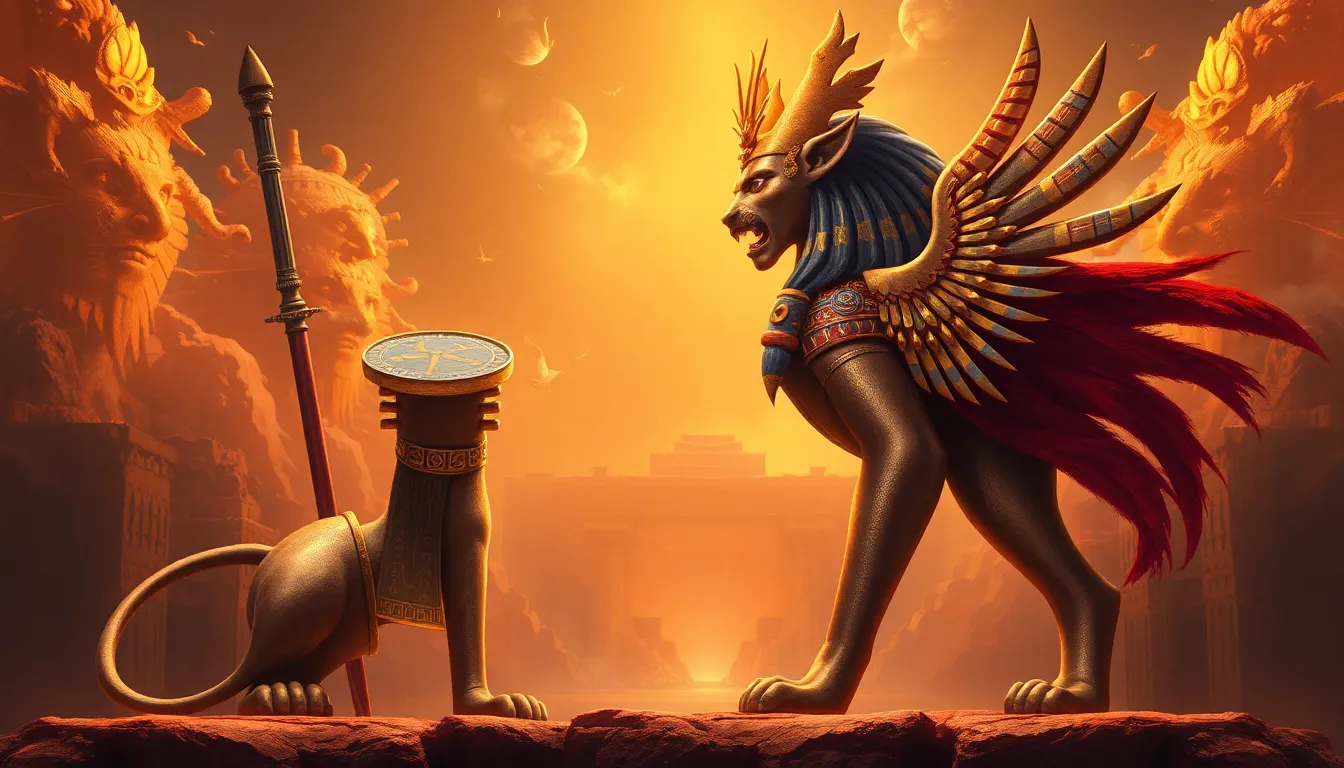Sekhmet: The Fierce Lioness and Goddess of War
I. Introduction
Sekhmet, the formidable lioness goddess of war, holds a prominent place in ancient Egyptian mythology. Revered as a fierce protector, she embodies the duality of destruction and healing. This article will explore her historical significance, mythological narratives, attributes as a warrior, and her enduring legacy in both ancient and modern contexts.
II. Historical Context of Sekhmet
A. Origins of Sekhmet in ancient Egyptian religion
Sekhmet was one of the oldest deities in the Egyptian pantheon, believed to have originated during the early dynastic period. She was associated with the sun and the fierce heat it brings, symbolizing both the destructive and life-giving forces of nature.
B. Cultural significance and worship practices
Devotees honored Sekhmet with festivals and rituals aimed at appeasing her fierce nature and seeking her protection. The annual festival of Sekhmet, known as the “Feast of the Beautiful Reunion,” involved elaborate ceremonies to ensure her favor and maintain harmony in society.
C. Iconography and representations of Sekhmet in art and artifacts
Sekhmet is often depicted as a lioness or as a woman with a lioness head, showcasing her fierce demeanor. Artifacts such as statues, amulets, and temple reliefs reveal her significance in Egyptian culture. Common symbols associated with her include:
- The lioness head
- The sun disk
- Weapons such as swords and arrows
III. Mythological Role and Stories
A. Sekhmet’s creation myth and her association with the sun god Ra
According to mythology, Sekhmet was created by the sun god Ra from his fiery breath. Ra sent her to punish humanity for their disobedience, showcasing her role as a fierce enforcer of divine order.
B. Key myths involving Sekhmet and her battles against chaos
Sekhmet is central to various myths, particularly those involving her battles against the forces of chaos and disorder. One significant story recounts her transformation into the goddess Hathor after a bloodlust-filled rampage, demonstrating her volatile nature.
C. Symbolism of her fierce nature and its implications for ancient Egyptians
Her fierce nature represented the duality of chaos and order, embodying the idea that destruction is sometimes necessary for renewal. This concept resonated deeply with the ancient Egyptians, who understood the cyclical nature of life and death.
IV. Sekhmet as a Goddess of War
A. Attributes and symbols associated with Sekhmet as a warrior
Sekhmet is characterized by her warrior attributes, which include:
- Strength and ferocity
- Strategic intelligence in battle
- Divine protection for her followers
B. Her role in battles and conflicts among gods and humans
In Egyptian mythology, Sekhmet played a pivotal role in the battles between gods and chaotic forces. She was called upon by pharaohs during military campaigns to ensure victory and protect the realm from threats.
C. Examination of her duality as both destroyer and healer
While Sekhmet was a goddess of war, she also possessed healing powers, often invoked to cure ailments and injuries. This duality highlights the complex nature of her character, representing both destruction and restoration.
V. Sekhmet’s Influence on Ancient Egyptian Society
A. How Sekhmet was invoked in warfare and protection
Pharaohs would invoke Sekhmet’s name before battles, believing her fierce protection would lead them to victory. Her presence was considered vital in ensuring the safety and success of military endeavors.
B. Her impact on pharaohs and military campaigns
Sekhmet’s influence extended to the royal courts, where her worship was intertwined with the authority of the pharaohs. Temples dedicated to her served as centers for military strategy and divine guidance.
C. Festivals and rituals dedicated to Sekhmet
Festivals in her honor included offerings of food, music, and dance. The most notable was the “Feast of Sekhmet,” where priests would invoke her protection and blessings for the coming year.
VI. Sekhmet’s Legacy and Modern Interpretations
A. The revival of interest in Sekhmet in contemporary culture
In recent years, Sekhmet has experienced a revival in interest, particularly within feminist circles. She symbolizes empowerment and strength, resonating with contemporary themes of female resilience.
B. Sekhmet’s representation in art, literature, and popular media
Sekhmet appears in various forms of modern art and literature, often depicted as a powerful figure challenging oppression. Her character has inspired novels, films, and even video games, highlighting her relevance in today’s society.
C. The modern understanding of her as a symbol of empowerment
Today, Sekhmet is viewed not only as a goddess of war but also as a symbol of empowerment for women, representing the strength to overcome adversity and assert one’s power in a patriarchal society.
VII. Comparative Analysis with Other Warrior Deities
A. Similarities and differences between Sekhmet and other deities (e.g., Athena, Durga)
Like Athena from Greek mythology and Durga from Hindu tradition, Sekhmet embodies the warrior archetype. However, her fierce and often destructive nature contrasts with Athena’s strategic wisdom and Durga’s nurturing aspect.
B. The universal themes of femininity and power in mythology
Across cultures, female warrior deities like Sekhmet, Athena, and Durga reflect the theme of femininity intertwined with power, illustrating diverse interpretations of women’s strength and resilience in mythology.
C. How Sekhmet’s characteristics resonate across cultures
Sekhmet’s characteristics of fierceness and protectiveness resonate across different cultures, where female figures embodying strength serve as inspirations for women facing societal challenges.
VIII. Conclusion
Sekhmet’s legacy as a goddess of war and protector remains significant in both ancient Egyptian culture and modern interpretations. Her fierce nature and duality of destruction and healing offer powerful lessons in resilience and empowerment. As we reflect on Sekhmet’s mythology, we recognize her enduring influence and the valuable insights she provides for contemporary society.




